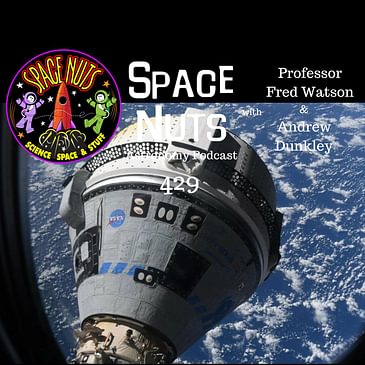Episode Highlights:- Boeing Starliner Update: The Boeing Starliner faces new challenges, this time with its return to Earth. Fred and Andrew discuss the issues with the thrusters and the cautious approach by NASA and Boeing to ensure the astronauts' safe return.
- Titan's Coastal Erosion: Discover the latest findings on Titan, the only other body in our solar system with a liquid surface. The duo explores how coastal erosion on Titan might be driven by waves, similar to Earth, and what this means for our understanding of this intriguing moon.
- Moon Formation: Fred explains the latest research on where moons are most likely to form, with a focus on rocky planets. Learn about the theories behind moon formation and why our own moon might be a rarity.
- Dark Matter Influence: Dark matter is back in the news with new research questioning our understanding of its influence on galaxies. Fred discusses the latest findings and what they mean for the future of dark matter research.
Don't forget to send us your questions via our website for our Q&A episodes....available Mondays... spacenuts.io.
Support Space Nuts and join us on this interstellar journey by visiting our website support page. Your contributions help us continue our mission to explore the wonders of the universe.
Clear skies and boundless exploration await on Space Nuts, where we make the cosmos your backyard.
Check out our sponsor: www.nordvpn.com/spacenuts
Become a supporter of this podcast: https://www.spreaker.com/podcast/space-nuts--2631155/support
Visit our websites: www.spacenuts.io
www.bitesz.com



